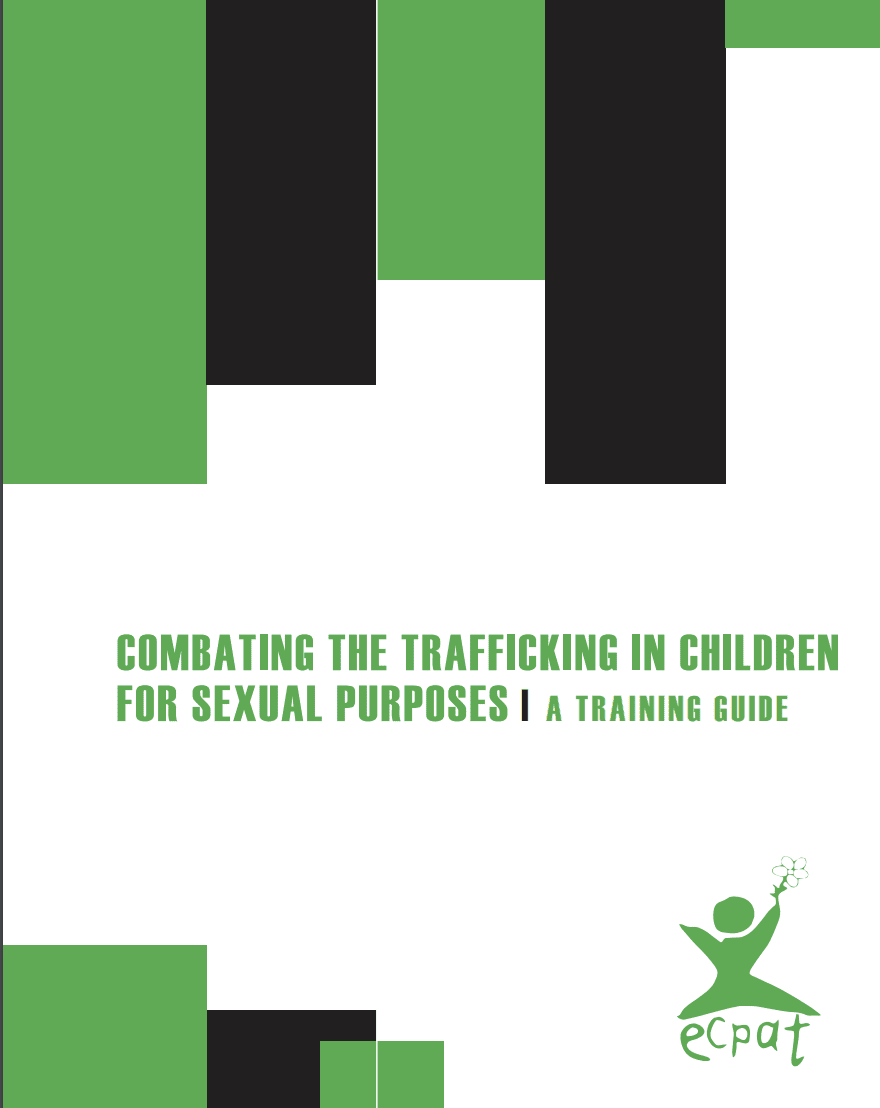
Combating the Trafficking in Children for Sexual Purposes: A Training Guide
Background to the Project
This Manual is the result of the third stage of a programme to combat trafficking in children for sexual purposes. The Manual is devised by the ECPAT Europe Law Enforcement Group. This is a regional grouping of ECPAT Europe partners, coordinated by ECPAT Netherlands. As an NGO, ECPAT’s particular focus is the sexual exploitation of children. It is in the context of combating such exploitation that this programme was initiated.
In the first and second stages of the programme, research in eight Eastern/Central European countries and eight Western European countries was published. This research focused on determining the features of the problem of trafficking in children, on the type of children who fall victim to trafficking, on national legislation and law enforcement, on prevention measures, and on the support and care facilities available to child victims of trafficking. It also examined the available international and regional standards and implementation mechanisms to combat child trafficking.
The research showed that among different stakeholders (police, social workers, state agencies) there is a lack of recognition of, and attention to, child victims of trafficking, and to the special protection and care that they need. Cooperation at international, regional, national and local level between responsible parties is lacking. Many professionals in law enforcement and social care organizations do not understand the effects of trafficking on children, and do not know how to work with and protect such children. It was concluded that training with a child rights based approach was needed for these professionals.
Given the cross-border and internal movement that comes with trafficking of persons, and the diversity of problems that face victims, it was considered important that training involve the diverse stakeholders, and emphasise the importance of cooperation and networking between them.
This Training Manual was developed in response to these conclusions. As with the research part of the project, ‘twinning’ partnerships between Western and Eastern European groups were formed to work on the Manual.
Objectives of the Manual
The resources in this Manual are for the use of trainers who are seeking to train multistakeholder groups consisting of professionals who want to learn about the issue of child trafficking, to know how to protect children from being trafficked for sexual purposes, and to give appropriate protection and assistance to those children who come within their sphere of professional responsibility as victims of trafficking. The target audience is mainly police men and women, social workers, and state agency employees concerned with child protection.
Although the Manual does not always distinguish between child victims who have been trafficked for sexual purposes, and those who have been trafficked for other purposes, its main focus is on the trafficking of children for sexual purposes. Within the overall context of ‘child trafficking’ therefore, the training seeks to target the care and protection in particular of children who have been trafficked for sexual exploitation, or those children who are at risk of sexual exploitation.
The Manual provides information, techniques and tools to make training effective. There are suggestions about:
- The role of the trainer
- Understanding the target group
- How to manage challenging situations
- How to use diverse learning activities and technology •
- Intercultural skills
- Time allocation and prioritisation
- How to ensure favourable training conditions
The Manual is a practical guide, and is not intended to provide a definitive programme. Trainers are encouraged to adapt the information to fit the needs of the participants that they are training, and to the particular circumstances of the country in which they are situated for the training.
How to use this Manual
At the end of this manual there is a list of Resources, some of which have been used in the preparation of the Manual. They will be helpful as a reference guide and as source material. Chapters 2 and 3 are intended to provide information and guidance to the trainer before undertaking the training. In Chapter 2 the focus is on training techniques and tools necessary to conduct training successfully. It includes tips on what to do when facing difficult situations. This chapter also explains some techniques for active learning through role-playing, discussion, case studies, etc. Chapter 3 provides guidance on how to develop a training programme, with reference to the overall aims of the training, the target groups and the length of the training. Chapter 4 consists of ten generic training sessions. The objectives of each session are explained, as well as the difficulties the trainer may face in the session. Trainers can adapt these sessions in the light of the objectives he/she needs to achieve, the country/cultural environment in which the training takes place, and the specific needs and capacities of the participants. A format is suggested for the session, and exercises or activities that will encourage active learning between the participants. Worksheets and Fact Sheets are provided to assist the trainer to deliver the sessions.
Read more here.
